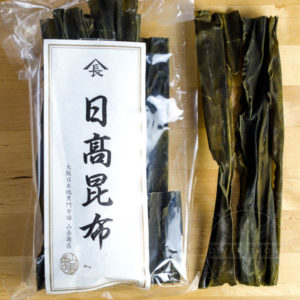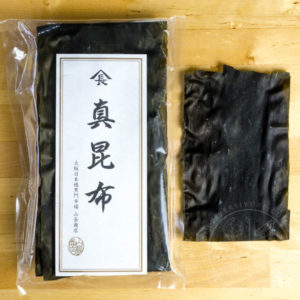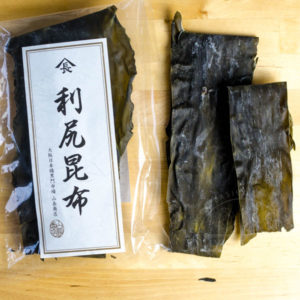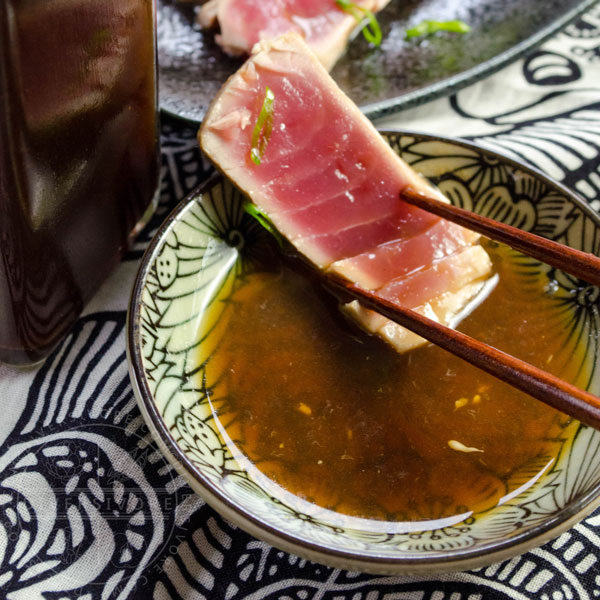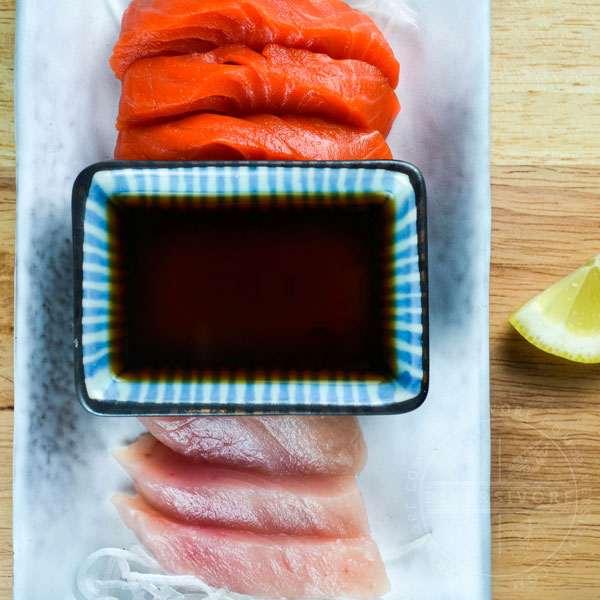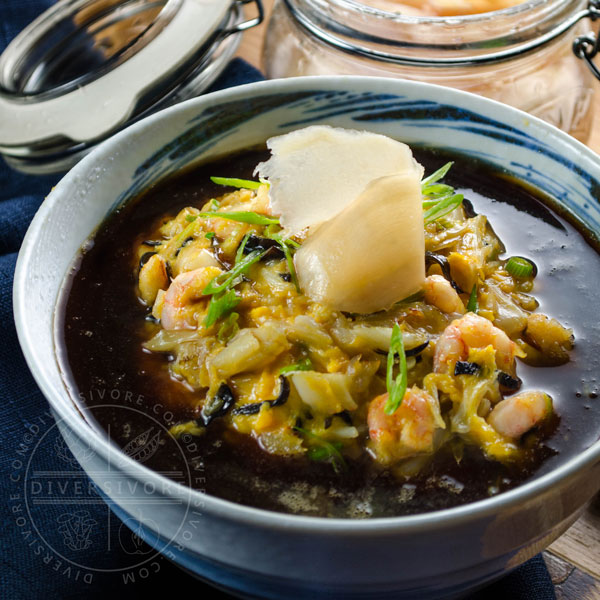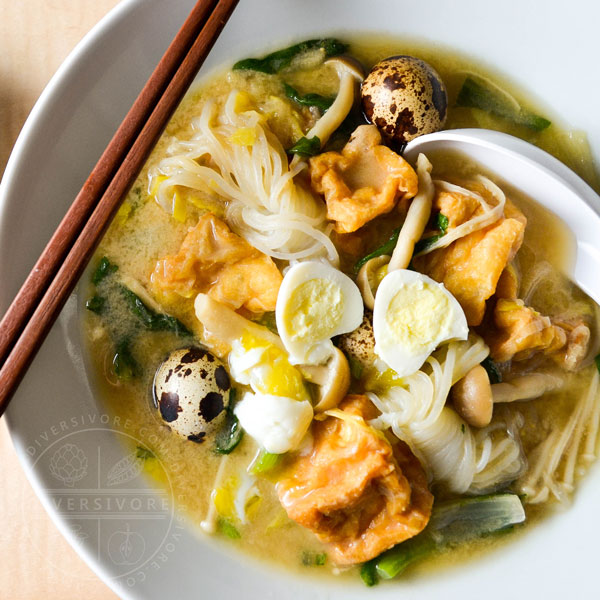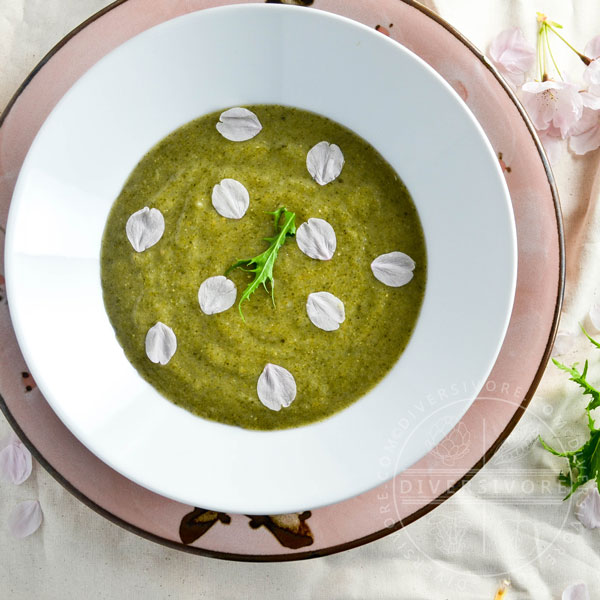Diversivore Guide To
Kombu
(Dashi Kelp)
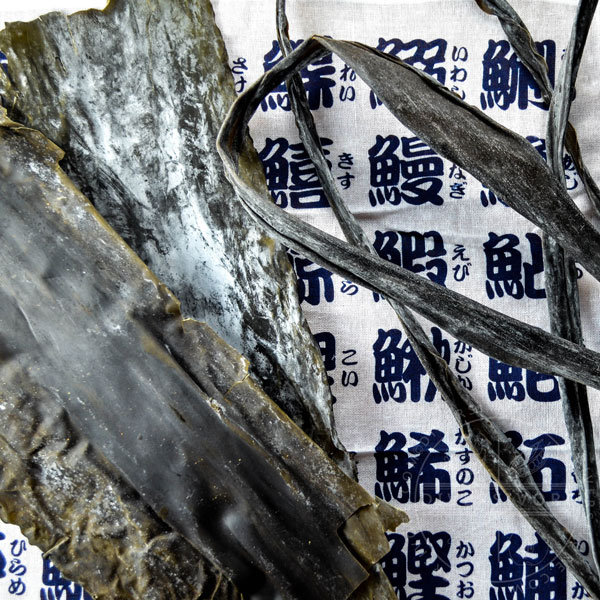
Share this Guide
The Basics
What Is It?
Any of several edible kelp seaweeds from the family Laminariaceae, most commonly used in Japan and Korea. Kombu specifically refers to the seaweed in its dried state, commonly used to make the umami-rich stock known as dashi.
Where Can I Find It?
Easiest to find at Japanese and Korean grocery stores, kombu can also be found at well-stocked Chinese and pan-Asian grocers, health food stores, and from online shops.
Flavour Profile
The flavour of kombu itself is somewhat difficult to describe. It's briny and somewhat 'green' tasting. Kombu itself can be eaten (it's quite rubbery), but it's primarily used to make a savoury, umami-rich broth. This broth (dashi) is the foundation of much of Japanese cooking. Without added salt, kombu dashi can taste quite plain.
Other Names
English: konbu (another transliteration of the Japanese name); dashi kelp
Japanese: 昆布 - kombu (or konbu, pronounced the same way)
Korean: 다시마 - dasima
Chinese: 海帶 - hǎidài
Kombu FAQs
What's the white powder on my kombu?
The white powdery substance on the surface of kombu is composed of the naturally occurring glutamates and other savoury umami-rich compounds that give kombu its special flavour. Don't wipe it off!
How do I prepare kombu for dashi?
In general, you don't need to do much to prepare kombu. Kombu is generally fairly clean, though lower grade/inexpensive stuff may have some clinging bits of grit, seaweed, or tiny sea creatures. If you do need to wipe the surface, do it gently with a dry cloth. You don't want to wipe off the umami-rich white powder!
Does kombu taste fishy?
Kombu doesn't taste fishy at all. Dashi stock can sometimes taste fishy, as it can be made with a variety of different types of fish, but kombu itself has a briny, savoury, slightly vegetal flavour.
Is kombu the same as nori, wakame, laver, or dulse?
No. There are many different types of edible seaweed, and they can be used in a wide variety of ways. Kombu comes from the kelp family of brown algae seaweeds (Laminariaceae). Wakame is also a type of brown algae, but in a different family (Alariaceae). It is generally too delicate to be used to make dashi, but it does make a nice addition to Japanese soups or stocks, especially if you can't find kombu. Laver and nori are red algae seaweeds (family Bangiaceae), and are much too delicate to be used like kombu. Dulse is also a red algae, though it is more robust, and could potentially be used as a sort of kombu substitute or variation.
What can you substitute for kombu?
This is a slightly tricky question. If you can't find kombu, you can make dashi stock with just katsuobushi (dried skipjack tuna) and shiitake mushrooms. It won't taste exactly the same, but it still makes a good dashi base. The problem, of course, is that if you can't find kombu, you're probably not going to find katsuobushi either. In this situation, good quality instant dashi is probably your best bet, as it can be bought online with relative ease.
If you need kombu for eating on its own, there aren't really many useful substitutes, though you could experiment with other types of seaweed.
How-To
Find
Kombu is easiest to find at Japanese and Korean grocery stores. Chinese and pan-Asian grocery stores may carry it as well, though it may be labelled differently (e.g. 'Prophase Kelp Slices').
Choose
Choice may be limited in many markets; be sure to check expiration dates, and look for kombu with minimal breakage. Make sure to buy kombu that's kelp only, and not a product with added ingredients (e.g. sesame seeds), as these are meant for eating as-is, and not for making dashi. (See note below for more information)
Prep
Difficulty: Easy - Kombu is generally ready to use right out of the package, but it may need to be gently wiped with a clean, dry cloth to remove any clinging debris. Do not use a wet cloth, and do not wipe away the powder white substance on the leaves!
- Use sharp scissors to cut large pieces of kombu to size, or carefully fold and snap off the amount you need.
- See Prep Notes below for information on using kombu to make dashi.Use
Kombu is used in two primary fashions: on its own (i.e. as a vegetable), and to create a savoury cooking stock called dashi. In either case, dashi will require rehydration in order to soften it. Kombu used to make dashi can be saved to eat or use in other dishes.
Store
Short or Long Term: Store in an airtight bag or container in a cool, dry pantry or similar location. Kombu can keep well for a very long time, but it may start to lose some flavour after a year.
Culinary Info
Flavour Profile
Savoury/Umami; Vegetal - On its own and unseasoned, kombu is actually somewhat plain, with a briny, vegetal quality. But with added salt and other savoury ingredients, the intense 'meaty' umami flavour becomes much more distinctive and prominent.
Substitutions
Kombu is difficult to substitute for. If you need a seaweed to eat, wakame can make an acceptable substitute, though it is thinner and more delicate. For making dashi however, the best substitutions are generally going to be other dashi base ingredients, or some type of instant dashi. See Substitution Notes below for details.
Cuisines
Kombu is particularly prominent in Japanese cuisine, but is also widely used and enjoyed in Korea and China. It tends to feature most prominently in the traditional cuisines of coastal regions.
Flavour Pairings
As a vegetable, kombu pairs very well with soy sauce, miso, sesame, fish, and other seafood.. As a component of dashi its fairly neutral, and can be said to work well with an incredibly wide variety of foods - in particular those that benefit from a savoury kick!
Varieties
There are a number of varieties of kombu, though many of them are difficult to obtain outside of Japan. The differences between different types are generally subtle. For a detailed breakdown of kombu types, see "Important Varieties" below.
More Info
Nutrition
The nutritional impact of kombu on an average diet is a little difficult to summarize. If used only to make dashi, the nutritional contribution is quite minimal. Even when eaten on it's own, kombu is not particularly dense in calories, nutrients, or sodium. It does, however, contain exceptionally high levels of iodine. See Health & Science below for more information.Nutrition FactsKombu - 100 g (3.5 oz)Amount Per ServingCalories 43 Calories from Fat 9% Daily Value*Fat 1g2%Saturated Fat 1g6%Sodium 233mg10%Potassium 89mg3%Carbohydrates 10g3%Fiber 1g4%Sugar 1g1%Protein 2g4%Vitamin A 116IU2%Vitamin C 3mg4%Calcium 168mg17%Iron 3mg17%* Percent Daily Values are based on a 2000 calorie diet.GMO Status
Non-GMO - there are no genetically modified or gene-edited seaweeds in the food supply.
Health & Science
- Kombu contains high levels of the amino acid glutamic acid, which is responsible for its significant savoury/umami flavour.
- Kombu can generally be considered to be a rather healthy food, however the high levels of iodine can on rare occasions be a health concern for people with thyroid problems. See Health and Science Note below for more details.Organic vs. Conventional
Kombu can be considered functionally organic, as it is grows wild in the ocean and is not manipulated or treated by any conventional agricultural methods.
Recipes with Kombu
Share this Guide


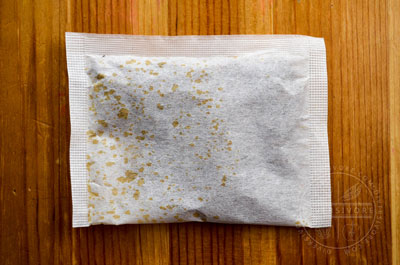 Kombu itself can't really be replaced. Do NOT be tempted to use another seaweed variety in its place, as it will not have the same effect. That being said, if you can't obtain kombu for making dashi, there's a decent chance that you can get pre-made dashi stock. These instant stocks usually come in boxes filled with packages that look like large tea bags (see image). Instant dashi varies greatly in quality and flavour, but better ones generally contain fish. Oddly enough, they often do not contain kombu, partly because powdered kombu can become bitter or slimy.
Kombu itself can't really be replaced. Do NOT be tempted to use another seaweed variety in its place, as it will not have the same effect. That being said, if you can't obtain kombu for making dashi, there's a decent chance that you can get pre-made dashi stock. These instant stocks usually come in boxes filled with packages that look like large tea bags (see image). Instant dashi varies greatly in quality and flavour, but better ones generally contain fish. Oddly enough, they often do not contain kombu, partly because powdered kombu can become bitter or slimy.